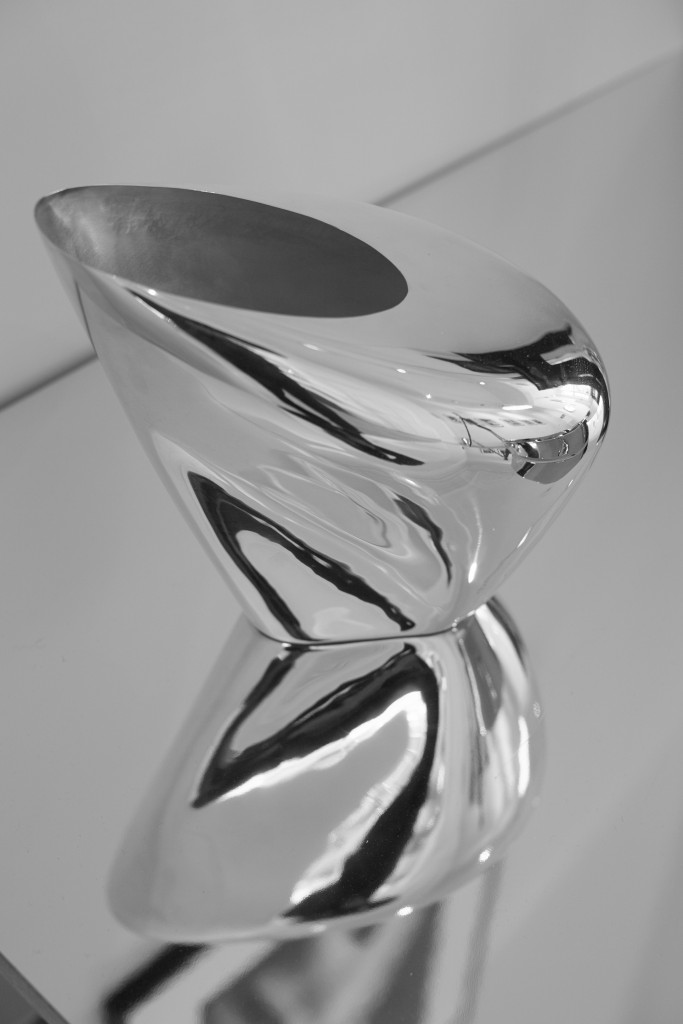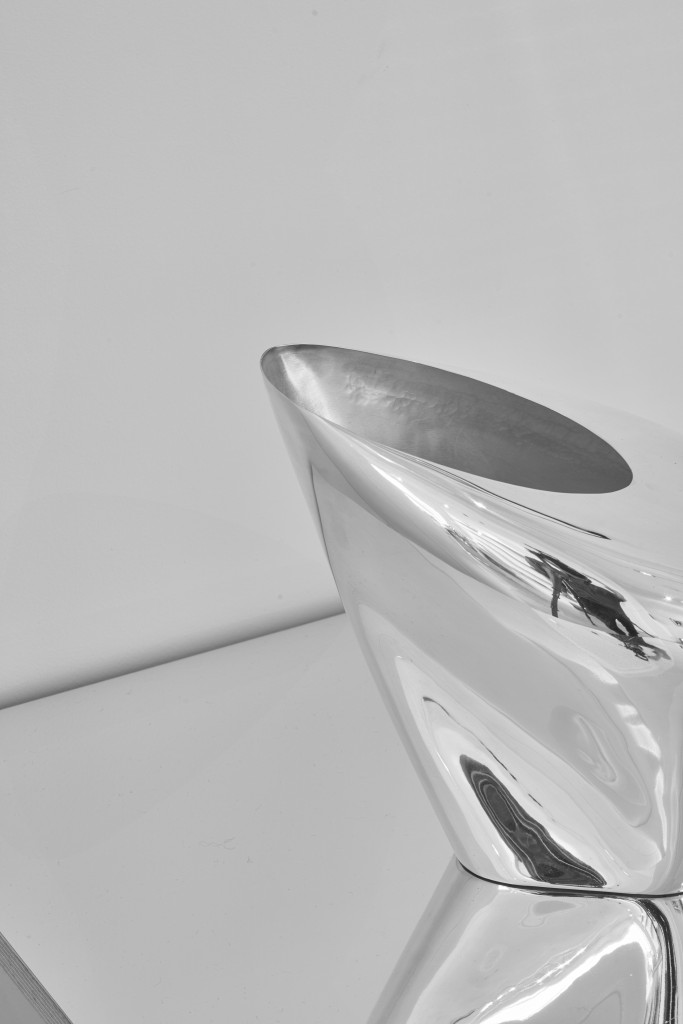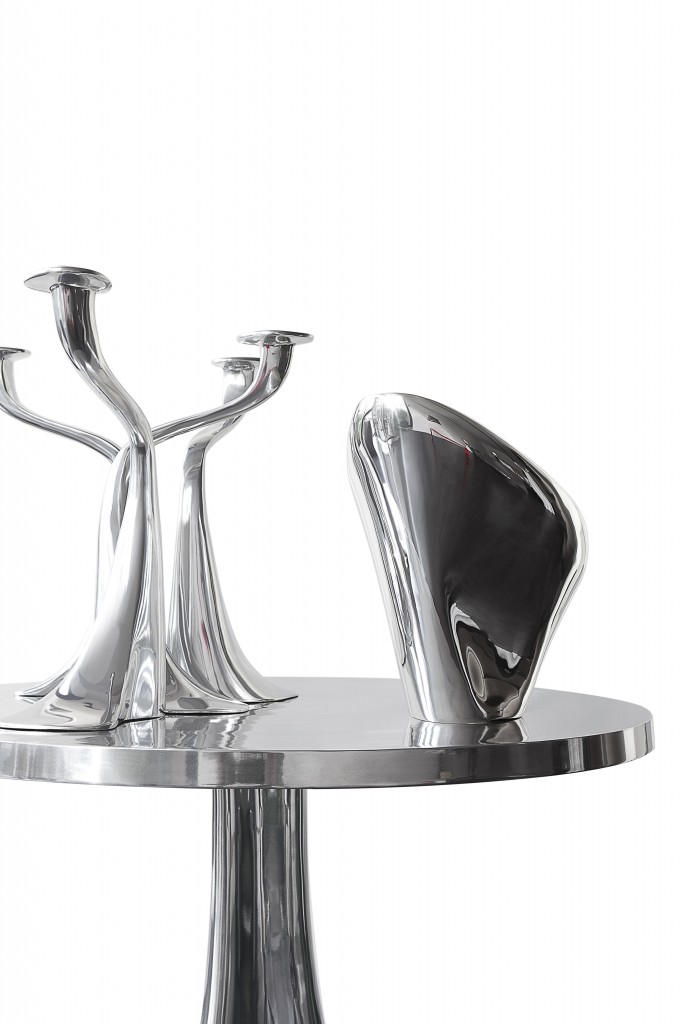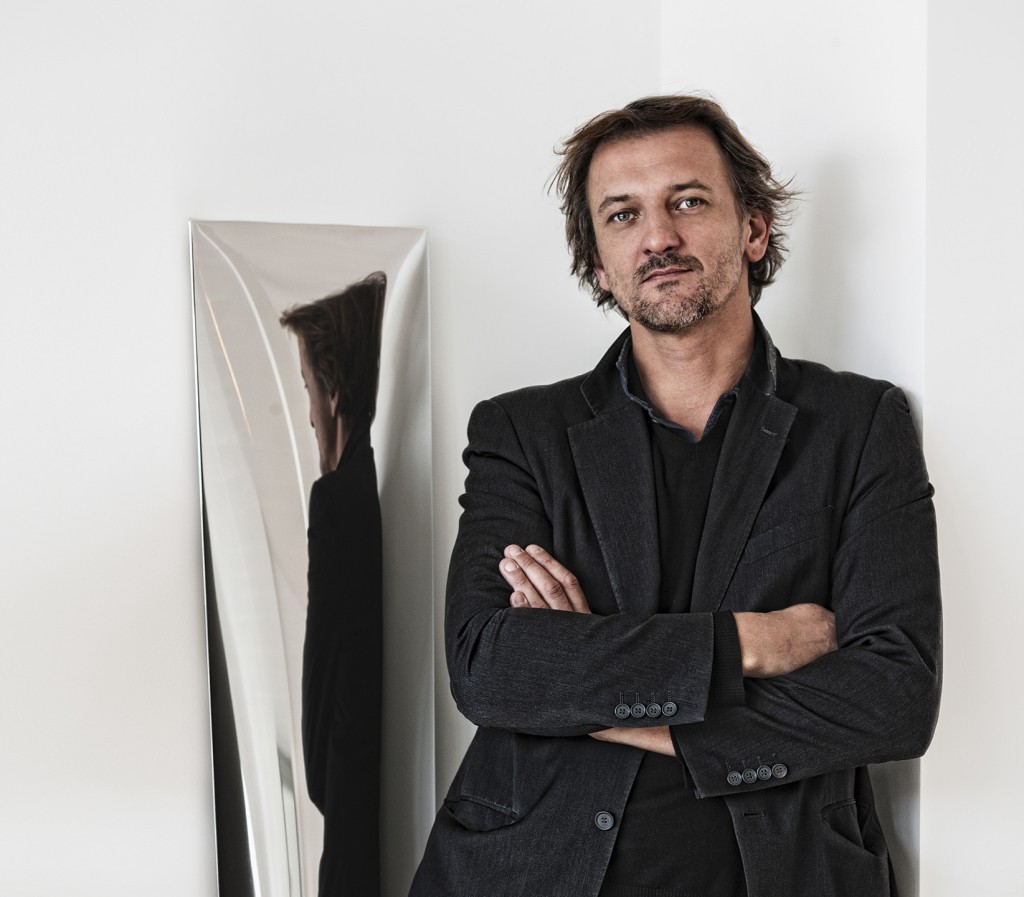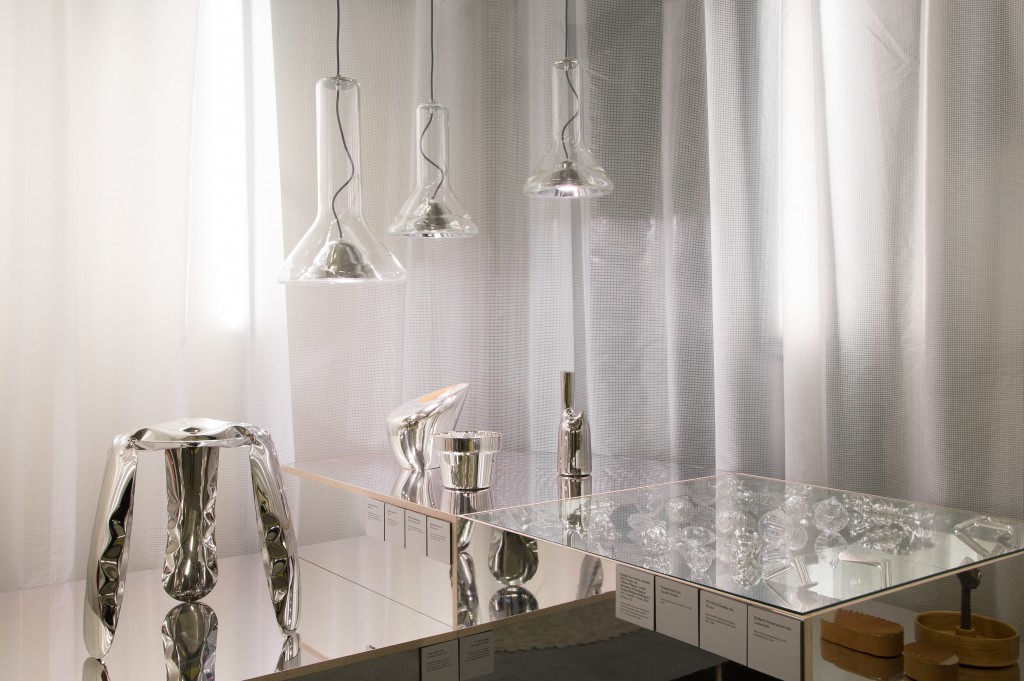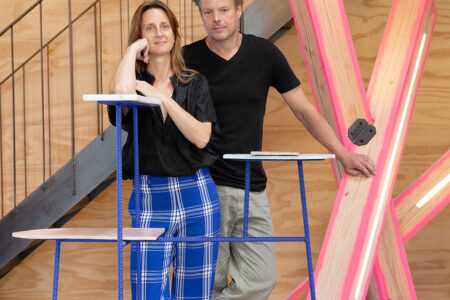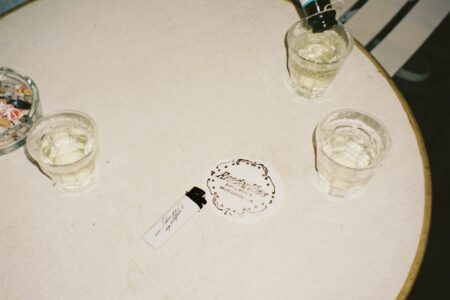Xavier Lust: Intoxicated Fluidity
TLmag spoke to Xavier Lust about his Cruise Wine Cooler for Italian brand Driade, now on show at Spazio Nobile.
Pushing manufacturing technologies and form to new limits, Brussels-based designer Xavier Lust always looks to create a tension within his accessories, furniture and urban applications. In this respect, the designer’s oeuvre can be identified as a steady stream of research-based experimentations in deformation. Straddling the boundaries of limited edition and contract markets, the Belgian designer has worked with major brands like MDF Italia, De Padova and Skitsch and has shown with Nilufar Gallery and Galerie Pierre Passebon. His work has also been exhibited at the Musée des Arts décoratifs in Paris, at Amsterdam’s Stedelijk, and can be found in the streets of Brussels. Lust is the recipient of numerous awards including the highly prestigious Compasso d’Oro. TLmag spoke to the designer about his Cruise Wine Cooler for the Italian brand Driade.
TLmag: What is your affinity for silver?
Xavier Lust: Implemented throughout history for its luxurious and docile qualities, silver has since been replaced with far more efficient nickel, chrome and unoxidised aluminium. The metal is now seen as much more temperamental; a material that ages faster and demands more up-keep. However, for aesthetes, nothing rivals its luminosity. The material inspires a sense of immortality and a quality of life. Today, the term ‘silver’ has become a porte-manteau for a range of shiny metallic surface treatments.
Your Cruise Wine Cooler features a silver finish. What visual, physical or metaphoric treatment does this effect allow you to express?
Cruise’s form evokes the hull of a ship but when looked at from the front, it reveals a level of asymmetry. The cooler’s almost melted shape has a slight reference to alcohol and iced wine. From its profile, one discovers a shape conducive to its function; a vessel allowing ice to surround a bottle in a circular motion. On sunny days, condensation and water droplets render the metallic surface in an almost romantic display of interaction. I’ve always opted to use materials for their inherent structural and surface qualities. This idea falls in line with Adolph Loos’ 1908 declaration that “ornament is crime.”
What process did you use to achieve a silver aesthetic?
Driade produced Cruise by moulding cut sheets of brass into welded shapes. These ultimate forms were then polished to a mirror finish. This treatment gives the object a level of fluidity that can capture its surroundings but at the same time become immaterial and disappear.
